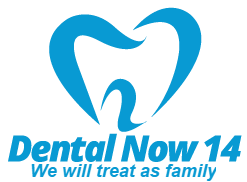TOOTH EXTRACTION
A dental extraction (also referred to as tooth extraction, exodontia, exodontics, or informally, tooth pulling) is the removal of teeth from the dental alveolus (socket) in the alveolar bone. Extractions are performed for a wide variety of reasons, but most commonly to remove teeth which have become unrestorable through tooth decay, periodontal disease, or dental trauma, especially when they are associated with toothache. Sometimes impacted wisdom teeth (wisdom teeth that are stuck and unable to grow normally into the mouth) cause recurrent infections of the gum (pericoronitis), and may be removed when other conservative treatments have failed (cleaning, antibiotics and operculectomy). In orthodontics, if the teeth are crowded, healthy teeth may be extracted (often bicuspids) to create space so the rest of the teeth can be straightened.
Procedure
Extractions could be categorized into non-surgical (simple) and surgical, depending on the type of tooth to be removed and other factors.

Assessment and special investigations
A comprehensive history taking should be performed to find out the pain history of the tooth, the patient’s medical history and the history of previous difficult extractions. The tooth should be assessed clinically i.e. checked visually by the dentist. Pre-extraction radiographs are not always necessary but are often taken to confirm the diagnosis and hence appropriate treatment plan. Radiographs also help in visualising the shape and size of roots which are beneficial in planning the extraction. All this information will aid the dentist in foreseeing any difficulties and hence preparing appropriately.[1]
Obtaining consent from patient
In order to obtain permission from patient for extraction of tooth the dentist should explain; other treatment options available, what is involved in the dental extraction procedure, the potential risks of the procedure and the benefits of the procedure. The process of gaining consent should be documented in clinical notes.
Giving local anaesthetic
Before extracting a tooth, the dentist would deliver local anaesthetic to ensure the tooth and surrounding tissues are numb before they start the extraction.[1] There are several techniques to achieve numbness of the tooth including
- infiltration – injection containing local anaesthetic is delivered into the gum near the root tip of the tooth to be extracted. This allows the local anaesthetic to penetrate through the bone, eventually reaching the nerve bundle of the tooth to be extracted.
- nerve block – injection containing local anaesthetic is delivered to an earlier branch of a nerve. For example, the inferior alveolar nerve block can be used to anaesthetise all the lower teeth.
The two most commonly used local anaesthetics in the UK are lidocaine and articaine. Prior to injection, topical anaesthetic gel or cream, such as lidocaine or benzocaine, can be applied to the gum to numb the site of the injection up to a few millimetres deep. This should reduce the discomfort felt during the injection and thus help to reduce patient anxiety.

Removal of tooth
During extraction, multiple instruments are used to aid and ease the removal of the tooth whilst trying to minimally traumatise the tissues to allow for quicker healing. Extraction forceps are commonly used to remove teeth. Different shaped forceps are available depending on the type of tooth requiring removal, what side of the mouth (left or right) it is on and if it is an upper or lower tooth. The beaks of the forceps must grip onto the root of the tooth securely before pressure is applied along the long axis of the tooth towards the root.
Different movements of the forceps can be employed to remove teeth. Generally, while keeping downwards pressure attempts to move the tooth towards the cheek side (buccal) and then the opposite direction (palatal or lingual) are made to loosen the tooth from its socket. For single, conical-rooted teeth such as the incisors, rotatory movements are also used. A ‘figure of eight’ movement can be used to extract lower molars.

